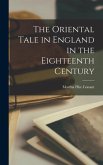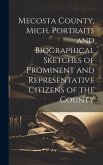Master's Thesis from the year 2001 in the subject Literature - Comparative Literature, grade: 10, University of Bucharest (Faculty of Letters), course: Comparative Literature, language: English, abstract: The present study represents an iconological approach of Western and Eastern literature and arts, during the 18th century. It is a synchronic analysis of two literary texts, the Chinese novel, Dream of the Red Chamber, written by the Chinese writer Cao Xue Qin and Samuel Richardson¿s novel Pamela, with the help of visual element, as an intermediary between the author and the interlocutor. The works of art used for the study are the two feminine portraits Lady Graham and Lady Sheridan, by Thomas Gainsborough and Spring Morning in the Han Palace, by Qiu Ying, in the Chinese artistic space. The comparative approach is supported by the theory of intertextuality, which offers us the freedom of understanding two literary texts as a common structure. Although in point of techniques, there are huge differences between the two cultural environments discussed, which are mainly determined by the artistic taste of the societies, as well as a result of the cultural canon imposed by territorial limits, we have to admit that the artistic representations have a common point of view: the woman and the world surrounding her beauty. The point of convergence between the two literary texts, one from China and the other one from England, refers to the common ideology referring to decency and promiscuity, perception upon the gender differences, and the conclusion that we can draw is that, in spite of the differentiating cultural element, human relationships appear as natural and normal all over the world, woman¿s status being perceived in the same way, the social code and the level of civilisation of a society, at a specific historical moment being the one that makes the difference.
Hinweis: Dieser Artikel kann nur an eine deutsche Lieferadresse ausgeliefert werden.
Hinweis: Dieser Artikel kann nur an eine deutsche Lieferadresse ausgeliefert werden.








